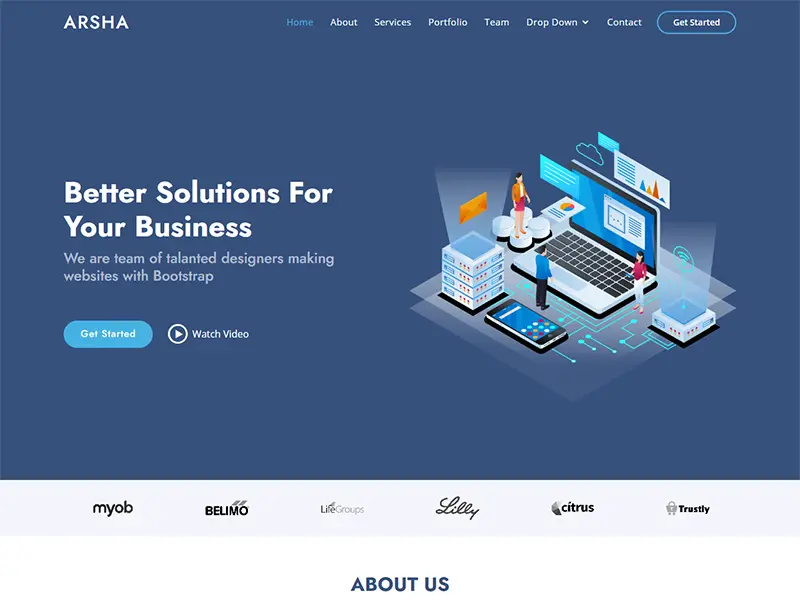An Intricate Journey into Decoding Website Templates
In the dynamic web development realm, every pixel and interaction counts. Website templates stand as foundational elements, shaping the online landscape with their pre-designed structures. From their diverse types to the advantages they bring and the strategic considerations for their effective use, we embark on a journey to understand how these templates serve as the building blocks for a visually stunning and functional web presence.
Grasping the Essence:
A website template serves as a pre-designed framework for constructing a website. These templates encapsulate not only structured layouts and design elements but, in some cases, basic functionalities. Acting as a starting point, they alleviate the development process by providing a solid foundation upon which developers and designers can build. This not only saves time but also streamlines the resource-intensive aspects of web development.

“Website templates are an ideal starting point for businesses with limited funds or technological expertise. They can help you develop an online presence quickly and affordably.
– Sarah Jones, Founder of Small Business Web Design Academy
Static Templates:
Static templates embody fixed, unchanging content. They find their utility in projects where the content remains relatively constant over time. This simplicity makes them ideal for smaller websites or personal portfolios.
Dynamic Templates:
Dynamic templates, on the other hand, adapt and evolve based on user interactions. Commonly utilized within content management systems (CMS) like WordPress, these templates facilitate seamless content updates. They are particularly beneficial for websites that require frequent changes and updates.
Responsive Templates:
The surge in diverse devices for web browsing has led to the rise of responsive templates. These templates dynamically adjust to different screen sizes, ensuring a consistent and user-friendly experience across desktops, laptops, tablets, and smartphones. This adaptability has become crucial in the era of mobile dominance.
E-commerce Templates:
Tailored for online stores, e-commerce templates come equipped with features essential for a robust digital retail experience. This includes product galleries, shopping carts, and checkout pages. These templates streamline the development of comprehensive e-commerce platforms, catering to the growing demands of online retail.
Customizable Templates:
Some templates offer a high degree of customization, providing developers with the flexibility to tweak layouts, color schemes, and functionalities to meet specific project requirements. These customizable templates strike a balance between efficiency and uniqueness, allowing for a tailored web presence.
Advantages Galore:
Time-Efficiency:
The foremost advantage of website templates lies in their ability to drastically reduce development time. They provide a structured foundation that developers can build upon, which is particularly beneficial for projects with tight timelines or budget constraints.
Cost-Effectiveness:
From a budgetary standpoint, it offers a cost-effective solution. By eliminating the need for extensive custom design, they contribute to lowering overall development costs. This proves especially beneficial for startups, small businesses, or projects with limited financial resources.
Consistency is key.
Templates ensure visual and structural consistency throughout a website. This consistency is crucial for creating a cohesive brand identity and a positive user experience. It helps reinforce brand recognition and trust among visitors.
Accessibility Matters:
Many templates are designed with accessibility principles in mind. This means they adhere to guidelines that enhance the inclusivity of websites. Incorporating accessibility features by default ensures that websites are usable by individuals with disabilities, aligning with ethical and user-centric design practices.
Up-to-Date Designs:
Professional designers often create website templates. This ensures that the design is contemporary, visually appealing, and aligned with current design trends.
A template allowed us to get online quickly and affordably, and it was easy for our volunteers with no coding experience to customize it to fit our needs.”
– David Lee, president of a community garden association.

Strategic Considerations for Effective Use:
Purpose and Audience:
Choosing a template aligned with the purpose of the website and the preferences of the target audience is paramount. Different projects demand different functionalities and aesthetics, and selecting a template that resonates with the intended audience enhances the overall user experience.
Customization Potential:
Assessing the level of customization a template allows is crucial. While templates provide a ready-made structure, the ability to customize elements such as color schemes, typography, and layouts ensures that the final website aligns with the unique branding and design requirements of the project.
Responsiveness Rules:
Ensuring a seamless experience across various screen sizes is not just a design consideration but a necessity for reaching and engaging users on different devices.
SEO-Friendly Structure:
Selecting templates with a structure conducive to search engine optimization (SEO) is strategic. An SEO-friendly template facilitates better visibility on search engine result pages, contributing to the overall success of the website in attracting organic traffic.
Source Credibility:
Considering the reputation and credibility of the source, providing the template is a prudent step. Opting for templates from reputable platforms or designers ensures not only the quality of the design but also security and ongoing support.
Website templates emerge not merely as convenient tools but as dynamic instruments shaping the very fabric of web development. Their versatility, time efficiency, and cost-effectiveness make them indispensable for a myriad of projects, ranging from personal blogs to complex e-commerce platforms. Yet, effective utilization demands a nuanced understanding of factors such as purpose, customization potential, responsiveness, and SEO friendliness.
Traversing the dynamic landscape of digital evolution, templates stand as pivotal elements, empowering developers and designers to craft online experiences that captivate and resonate in an ever-changing digital frontier. Whether it’s a startup looking to establish an online presence, a small business seeking cost-effective solutions, or an individual with a passion for sharing content, templates offer a robust foundation for turning visions into compelling and functional digital realities.


